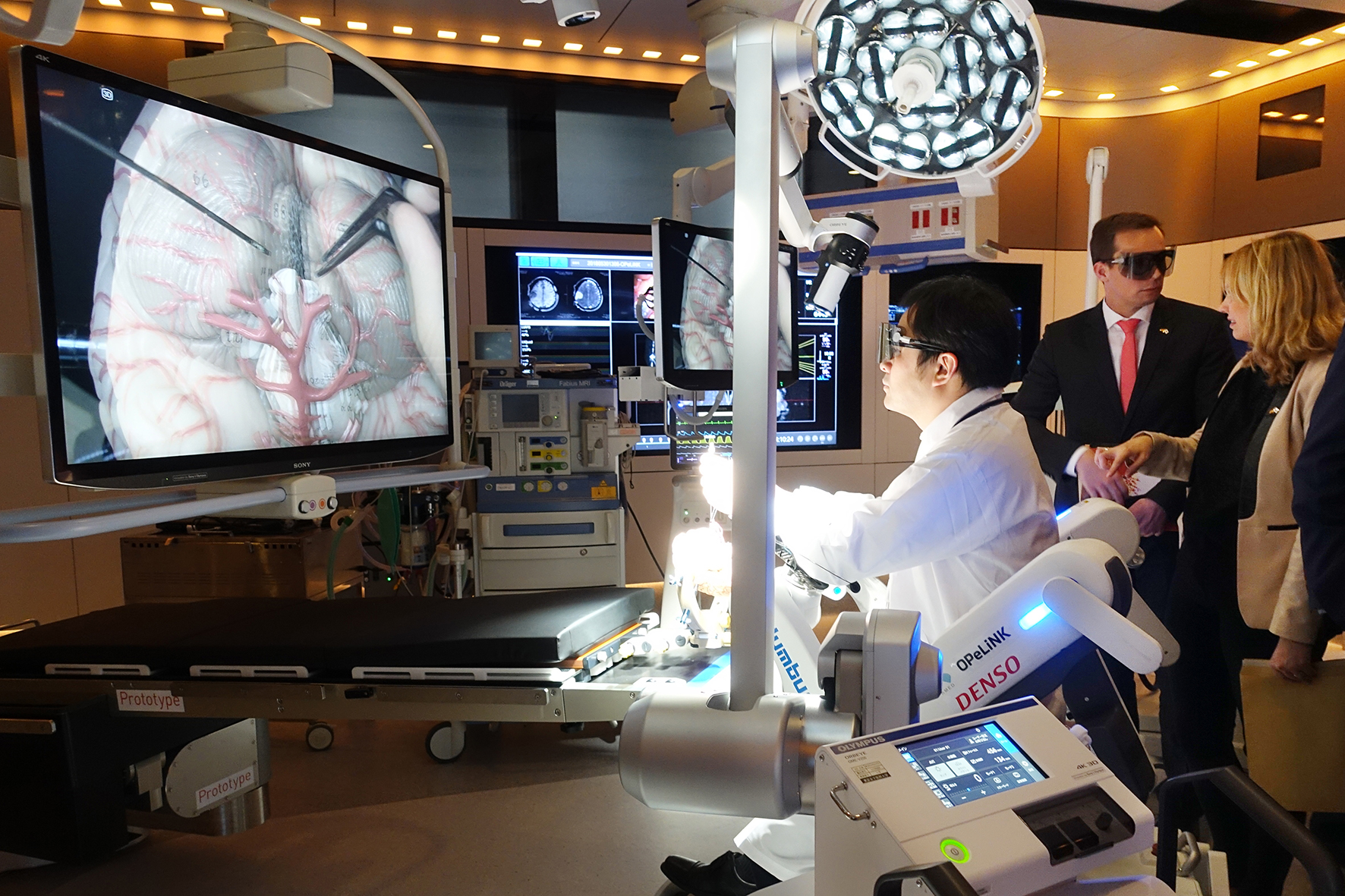Artificial Intelligence and Optical Coherence Tomography: German Federal Research Minister Karliczek visits Fraunhofer Research Alliance in Tokyo
During her trip to Japan, Federal Research Minister Anja Karliczek visited the OCTmapp research alliance. Within the framework of OCTmapp, the Fraunhofer IPT and the Tokyo Women's Medical University (TWMU) are establishing an international network and research structure in Japan on the topic of optical coherence tomography for new medical applications. At the TWMU in Tokyo, the Minister looked at how German-Japanese research cooperation works in practice.

The non-invasive imaging method of Optical Coherence Tomography (OCT) is already excellently suited for investigating the structure of organic tissue. OCT has therefore long since become routine in ophthalmology for retinal diagnostics. However, there is also a need to develop further medical applications. OCT permits tumor tissue to be detected at an early stage of the disease, for example in visceral surgery, otorhinolaryngology (ENT) or neurosurgery. Cartilage tissue can also be examined more closely in the diagnosis of osteoarthritis than with other imaging methods. OCT not only provides high quality imaging, but also protects patients from radiation exposure and provides immediate examination results. In the clinical everyday life of many medical disciplines, however, there is still a lack of know-how on possible applications. In the coming years, the market for OCT systems is expected to grow primarily in minimally invasive surgery and non-invasive applications.
Optical Coherence Tomography Overcomes Limits through Artificial Intelligence and Deep Learning
Artificial intelligence not only supports physicians in their work, but could also help to establish medical imaging methods such as OCT more swiftly and bring them to market. For example, computers can learn the histological findings and, with the help of OCT, make this know-how available to the surgeon during an operation. The researchers also want to overcome the physical limits of the technology with deep learning algorithms and map not only tissue but also cells.
During their visit, Federal Research Minister Anja Karliczek and the President of the Fraunhofer-Gesellschaft Reimund Neugebauer, together with the Presidents of the DFG, the Helmholtz Association, the Leibniz Association, and members of the German Bundestag, gained an impression of the OCT technology and its application in the HyperSCOT intelligent operating theatre at the TWMU.
OCTmapp: International research cooperation between Fraunhofer IPT and Tokyo Women's Medical University
Establishing an international network and research structure on the topic of OCT for new medical applications in Japan is the aim of the research project "Optical Coherence Tomography for New Medical Applications", OCTmapp for short, which the Fraunhofer IPT and the Institute for Advanced Biomedical Engineering and Science at Tokyo Women's Medical University are working on. The Fraunhofer Center for International Management and Knowledge Economics IMW contributes its socio-economic competence to the project for the development and implementation of a successful commercialization strategy. During the five-year project period, the partners from Germany and Japan will jointly identify measures to create a financially self-sustaining German-Japanese research institution. The Fraunhofer IPT and the TWMU sealed the foundation of the research alliance OCTmapp and the joint research facility in Tokyo by signing an official cooperation agreement in November 2018. The project "OCTmapp" is funded by the Federal Ministry of Education and Research.